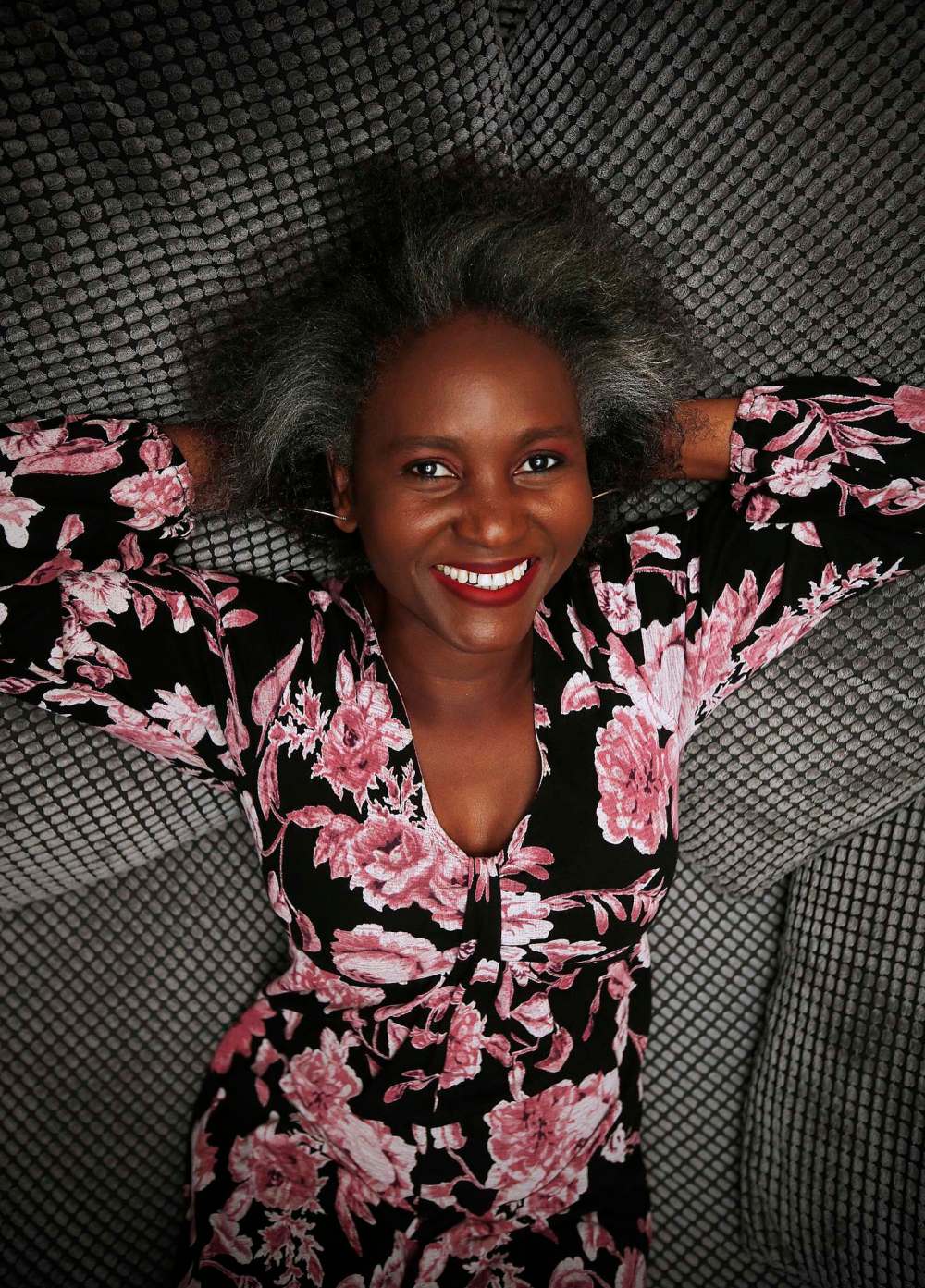Silver takes root With salons closed during the pandemic, many women are proudly embracing their grey hair
Read this article for free:
or
Already have an account? Log in here »
To continue reading, please subscribe:
Monthly Digital Subscription
$0 for the first 4 weeks*
- Enjoy unlimited reading on winnipegfreepress.com
- Read the E-Edition, our digital replica newspaper
- Access News Break, our award-winning app
- Play interactive puzzles
*No charge for 4 weeks then price increases to the regular rate of $19.00 plus GST every four weeks. Offer available to new and qualified returning subscribers only. Cancel any time.
Monthly Digital Subscription
$4.75/week*
- Enjoy unlimited reading on winnipegfreepress.com
- Read the E-Edition, our digital replica newspaper
- Access News Break, our award-winning app
- Play interactive puzzles
*Billed as $19 plus GST every four weeks. Cancel any time.
To continue reading, please subscribe:
Add Free Press access to your Brandon Sun subscription for only an additional
$1 for the first 4 weeks*
*Your next subscription payment will increase by $1.00 and you will be charged $16.99 plus GST for four weeks. After four weeks, your payment will increase to $23.99 plus GST every four weeks.
Read unlimited articles for free today:
or
Already have an account? Log in here »
Hey there, time traveller!
This article was published 27/08/2021 (1565 days ago), so information in it may no longer be current.
Until recently, Monique Doyle had been colouring her hair for so long, she couldn’t remember what her natural shade was.
Doyle, 50, started going grey in her 30s. For decades, she went to the salon every six weeks to have her mane transformed into a rich auburn. A couple years ago, she had made the decision to stop colouring over her silver strands, and her hairdresser was easing her into the transition.
But then the pandemic hit, shuttering salons and leaving her with more regrowth than she’d seen in years.
“The first few months were tough,” Doyle says. “I hated seeing my roots. It was always something that used to stress me out. I couldn’t stand seeing the line where you could see it growing out. It bothered me.”

She had other concerns about going grey, too. “I did worry in the beginning that (growing it out) did look sloppy. I’ve got two teenage boys, and I don’t want people to think I’m their grandmother.”
Something shifted as the pandemic’s weeks stretched into months. Doyle didn’t just feel good about her silver hair. She felt free.
Doyle is one of many women who decided to go grey — and stay that way — amid the pandemic. With salons closed on and off during wave-related lockdowns, many women were forced to reckon with their natural hair; others felt like they finally had room to embrace it (everyone I spoke to for this story said that if it wasn’t for the pandemic, they probably would have put off going grey for a few more years). Grombré, a portmanteau of grey and ombré, became the signature look of 2020.
Kelly O’Leary, a stylist and co-owner of Sapphire Hair Lounge in Winnipeg, confirmed it is a trend. In normal times, O’Leary has women booked in every four weeks to cover the tiny strips of grey that form at the root. But lockdowns are no friends of standing appointments and, the thing about hair is, it grows. “I think that a lot of them, for the first time, were able to see what it might actually look like,” O’Leary says. And many of them liked — or at least accepted — what they saw.
“I can think of a bunch of women who are making that change — like, we’re losing a bunch of money,” O’Leary adds with a laugh.
“I can think of a bunch of women who are making that change– like, we’re losing a bunch of money.” – Kelly O’Leary, stylist and co-owner of Sapphire Hair Lounge
In some ways, this trend feels more like a movement. In our youth-obsessed, 30-under-30 culture that tends to view women who are “over a certain age” as obsolete and invisible, embracing one’s silver strands feels rebellious — subversive, even.
Doyle agrees. “I had people tell me they were not on board,” she says. “I did it for me. I didn’t do it for anyone else but me. And it does feel rebellious.”
Mpho Begin, 44, started going grey in her 20s. Her hair had become increasingly heat-damaged over the decades, to the point she worried about it falling out completely.
“Black hair is very hard to take care of,” she says, adding that it can also be time consuming. “I just relied on going to the salon every six weeks.”

Begin doesn’t like wigs or weaves, so she wore braids for a long time. “I think the last time was January 2020, and the braids were literally falling off my head,” she says with a laugh. “That’s when I was like, ‘OK, I need to do something about my hair.’”
The pandemic offered the push she needed. With salons closed, Begin started poking around online. “I saw this young generation with beautiful Black hair and, thought, ‘how do they do that?’” she says. She learned some tips and tricks and has been documenting her own hair journey on Instagram since last July, as motivation and inspiration for other Black women.
“I saw a lot of women are going silver, but I didn’t see a lot of Black women,” Begin says. “I wanted to show that yeah, it’s OK to have Black grey hair and there’s nothing wrong with that.” A little over a year later, her hair is feeling healthier and stronger.

Corie Ives, 43, has always loved her hair. “I’ve been lucky,” she says. “I’ve been blessed to have tons of it. It’s thick. I can go curly, I can go straight.”
Ives is the daughter of a hair stylist, so caring for her hair has always been a huge part of her life. Having regular standing salon appointments was never a burden; that was her self-care time. “Hair always just made me feel pretty or feminine and sexy or whatever. When my hair is not done, I don’t feel those things.”
Ives, who started going grey in her early 20s, has now committed to growing out her coloured hair. The pandemic, she says, didn’t just shift how she thought about her hair. “I think even just throughout COVID, thinking about loving yourself more, or how you talk to yourself, and all that kind of stuff, you come into a different perception of yourself and embracing that fullness of who you authentically are.”
While Ives is excited about the end result, she’s hated the transition to grey. Ives is a flight attendant who has been able to fly for the whole pandemic so, unlike the work from home set, she’s also had to live out the awkward grow-out stage in a public forum. At the beginning, she was using headbands and spray colour to cover up her regrowth, and then finally just pulled the plug.
O’Leary affirms that the grow-out stage can be hard for people to muscle through. “It’s not cute,” she says. “This past year and a half has really stopped them from being able to cave, where most women would, after two months, say forget it, nevermind, but they’re not really able to (during the pandemic), so that’s been kind of lucky for them.” (Stylists can help ease the process with creative colour placement via highlights and toner can help break up that harsh demarcation — when salons are open, that is.)
Toni Hanson, 50, probably would have been one of those women. Her transition to grey was “not fun” — it came in unevenly. The hair around her face was white and silvery; the back of her head was still quite dark. If not for the pandemic, she probably wouldn’t have stuck with it.
“I think I would have been a lot more self-conscious,” she says. “When it started coming in and not being consistent, I probably would have given up and coloured it.”
“I feel my hair is so much healthier, I feel good about not putting chemicals and stuff in my hair. And I’ve accepted the fact that, hey, I’m not gonna look 30 anymore. And that’s OK.” – Toni Hanson
And now? “Now, I kind of like it,” she says. “I feel my hair is so much healthier, I feel good about not putting chemicals and stuff in my hair. And I’ve accepted the fact that, hey, I’m not gonna look 30 anymore. And that’s OK. I don’t necessarily want to.
“So, it’s taken a year and a half, but I’m comfortable with it now. Hey, if somebody could say, ‘I can magically make your hair dark again and you’ll look youthful again forever,’ I would take that opportunity without a doubt. But I have accepted it now.”
Indeed, this conversation isn’t just about hair, but about cultural and personal attitudes toward aging.
Begin grew up in Botswana and immediately noticed a cultural difference when she came to Canada in her early 20s.
“Back home, aging is embraced,” she says. “I grew up in a culture where every government document you had to put your age, so age wasn’t a big deal. Then I came here, and there’s more pressure to look young. You can’t even ask anybody what their age is. Back home, it’s nothing, right? Here, people are more afraid to tell their age than their bank account.
“Aging is a natural process, but I do understand that in this culture here, women were made to feel that once you get older you’re kind of useless, you’re done,” she says.
“Aging is a natural process, but I do understand that in this culture here, women were made to feel that once you get older you’re kind of useless, you’re done.” – Mpho Begin
She rejects that idea. “There’s nothing we can do about aging, so we might as well embrace it.”
Ives, meanwhile, started thinking about double standards. On men, a salt ‘n’ pepper mane is often seen as attractive, a hallmark of gravitas and aging gracefully. (George Clooney, it’s worth noting, went visibly grey in his 30s.)
“I could see that in women too — but I couldn’t see it in me,” she says. “So it was part of that transition too. I’m seeing these powerful, strong, beautiful women embrace natural aging, and it is attractive. It’s that shift in mindset: what do you decide is attractive? Or makes you feel good or confident?”
O’Leary has seen a shift from rigid, narrow beauty standards to anything-goes acceptance, pointing to the body positivity movement as another example. “It’s a different time, and it’s amazing,” she says. “Embrace who you are. There’s no need to cover it up. And if you want to, we’re here for that, too.”
For Doyle’s part, she’s appreciated seeing other women who are going through their own transformations to silver, grey and white — so personal, yet, so public. “I feel solidarity with women when I see them, and I can tell that they’ve grown it out over the pandemic as well,” she says. “I feel like, good for us.”
jen.zoratti@freepress.mb.ca
Twitter: @JenZoratti

Jen Zoratti is a Winnipeg Free Press columnist and author of the newsletter, NEXT, a weekly look towards a post-pandemic future.
Our newsroom depends on a growing audience of readers to power our journalism. If you are not a paid reader, please consider becoming a subscriber.
Our newsroom depends on its audience of readers to power our journalism. Thank you for your support.
History
Updated on Friday, August 27, 2021 8:07 PM CDT: Fixes pullquote attribution.








